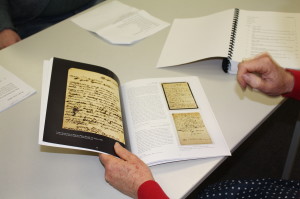The Darlimurla letters: It is something from the heart
“Because they had an importing company, they would travel each year between America and Britain. They had an office in London to buy for the company, and that’s one of the reasons for this correspondence, because they were travelling a lot.”
The Darlimurla letters consists of 350 documents, totalling around 500,000 words. The letters were written during the years 1875 to 1915. The correspondence was between Joseph Cochrane Macky and his son Thomas Hugh Macky.
Trish Macky is the granddaughter of Thomas Macky, and she has written a book highlighting the correspondence between her family members. In an exclusive interview to the students of Wintec, Trish Macky shares some insights into these letters.
“Sunday night was set for the letters, and the whole family right down to the little ones would write. They would apologize for short letters, and that would be around 3000-4000 words. They are beautifully written letters.”

The book covers each and every minute details of the letters. The letters themselves highlighted all the saga that took place in those days including current affairs, their own family affairs, sports, and other forms of entertainment that were accessible to the Macky family.
“What amazed me when I saw them (the letters) was that they were in perfect condition. My grandfather was very close to his parents, and they didn’t even find their bodies, and all he had was these letters, and he persevered them for all his life.”
After the death of Thomas Macky, the letters were handed over to Trish Macky’s aunt, Helen, who after transcribing these letters handed them over to Auckland Public library.
“The sheets were standard sizes that they used. I haven’t gone into the standards of the day, but they probably were able to send so many sheets for certain price. There were variations in the sheets. They were writing them every weekend. They use to talk of budgets, and so the letters would be sent every three weeks or at least after 10 days.”
Trish Macky also notes that the papers used for these letters had some variations over the years, and since postal services took different routes to deliver the letters, each route had its own price point. She stresses that the communication these days don’t match up to the intensity and the emotional values often found in those letters.
“It’s just that we have different kind of communication these days. You don’t get the communication that these guys have gone into, and it’s something from the heart or something that’s really troubling your soul.”




